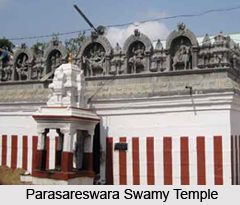
Narayanavanam is a residential locale, which is situated in the district of Chittoor of Andhra Pradesh state of Indian subcontinent. From Tirupati, Narayanavanam lies at a distance of 35 Kms. Also it is only 95 km from Chennai.
The strategic location of Narayanavanam also is quite important. Narayanavanam lies approximately at 13.42° N 79.58° E. It has an average height of 122 meters or 400 feet.
Over the years the demographers have worked diligently and organized surveys so that they would succeed in bringing forth data that are related to Narayanavanam`s demography. In this regard a special reference may be made of the Census report that has been issued out in the year 2001. As per this report, Narayanavanam has showed a population measurement of 10,965.Moreover if one studies the report in details one also can infer the status of males, females and also children and that too individually. Interestingly, in Narayanavanam both males and females are in equal proportion. To be specific, male populace constitutes 50 %, while female population also is the same.
Experts opine that the literacy situation of a town is a significant indicator for gauging the growth of any city or place. So far as the average literacy rate of Narayanavanam is concerned, it has shown a count of 72 percent. Thus it is even higher than that of India, which has been counted to be 59.5 %. Narayanavanam males are erudite which is apparent from its literacy rate comprising of 80 %. However female literacy is 63 % and is less than that of males. In Narayanavanam, 13 % of the population is below six years of age.
Access points also are prominent. To establish connectivity it is situated only five kms away from Puttur. From here one can also avail bus services to Narayanavanam.
Narayanavanam is a holy abode of temples. A popular temple consecrated to deity Kaliyuga, Venkateswara Swamy has been built here. Sorakaya Swami temple, Parasareswara swamy temple, Renuka parameswari temple, Aghastheswarswamy temple, Avanakshamma temple, Lord Narasimha swamy in singiri perumal kona etc deserve mentioning.
Economy of Narayanavanam is shaped by the manufacture of several dress material like lungis, shirt bits, chudidhar bits.
Moreover as a whole Chittoor district is a marketing hub of products like mangos, grain, sugarcane, and peanuts. Industrial growth also has occurred in the district. Oilseed and rice mills etc are produced. Being a part of the district it is quite evident that people of Narayanavanam too follows the same trend and tradition of the district.



















